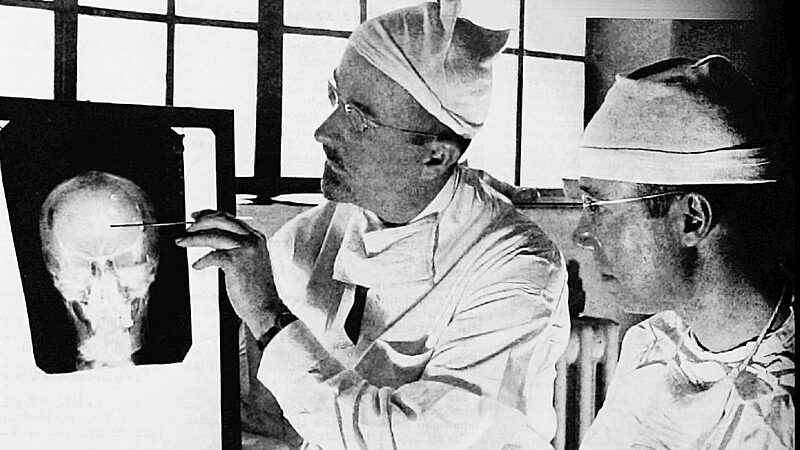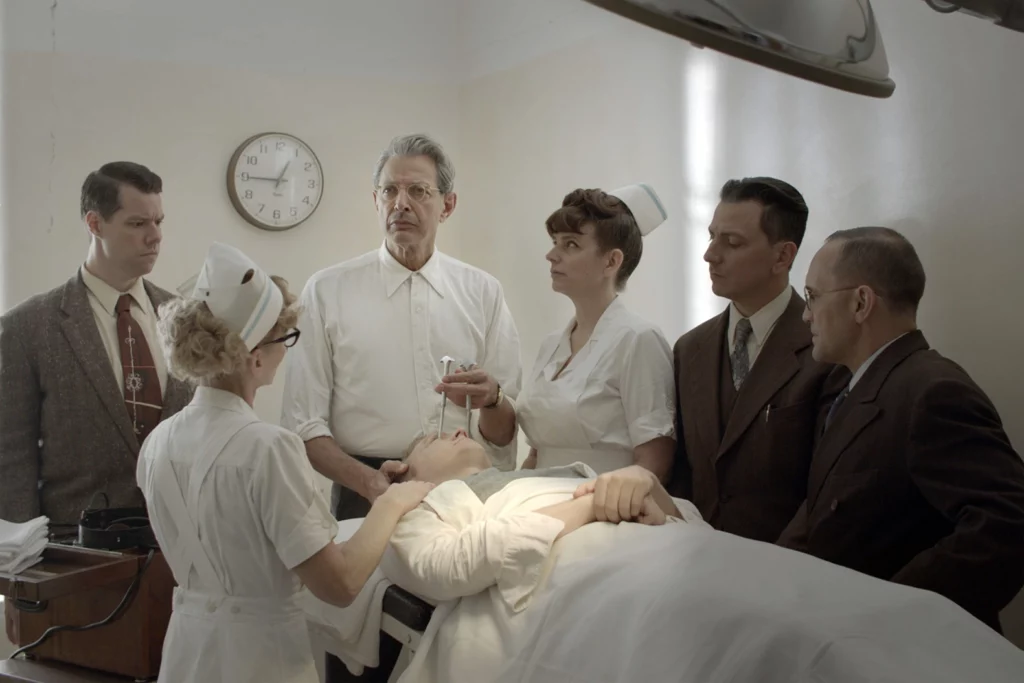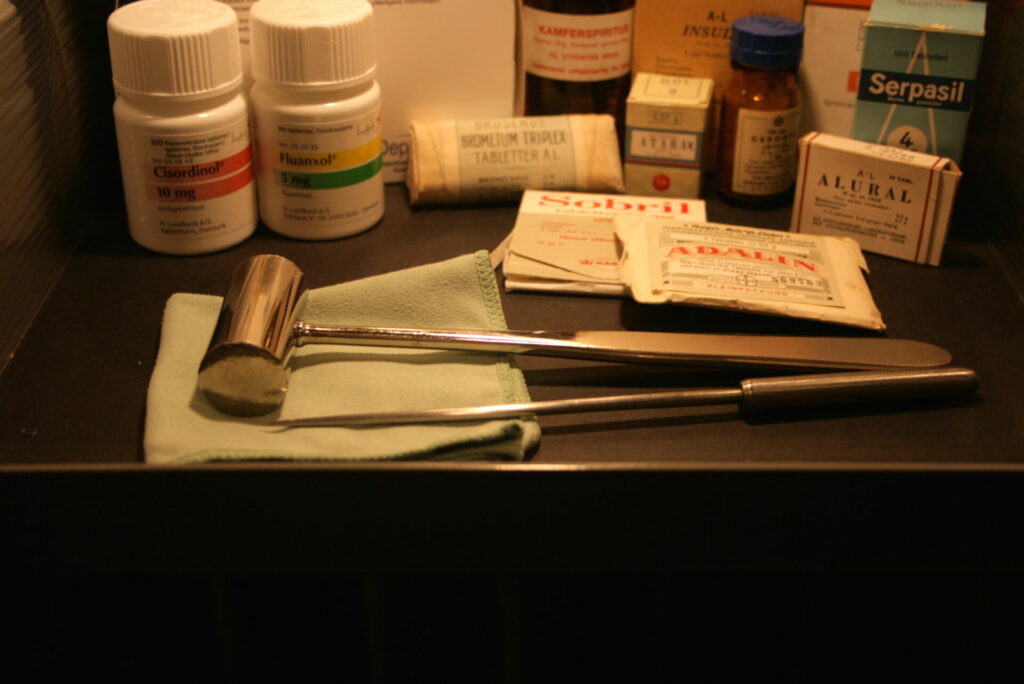The dark history of gay men, lobotomies and Walter Jackson Freeman II
We look at psychiatry's ugly history concerning sexual orientation and how the "Father of the Lobotomy" experimented on homosexual men
By Hugh Kaye

A young John Connor defies the warning of his cyborg defender and orders the indestructible machine to help break his mother, Sarah, out of the asylum she’s been detained in for her belief that machines are going to take over the world.
No prizes for guessing that this is a scene from T2: Judgment Day, the 1991 blockbuster that’s earned close to £460m worldwide.
What you probably won’t know is that the asylum in the film is based on a real-life mental institution called Atascadero State Hospital.
In 1949, Californian judges were given the option to brand homosexuals charged with sodomy or “oral copulation” – both illegal at the time – either as criminals to be punished, or as mentally ill people to be “cured.” Instead of being sent to prison for between five and 10 years, gay men could be locked up in a state hospital until “cured”, which meant the sentence could potentially see them incarcerated for the rest of their life.
Located midway between Los Angeles and San Francisco, Atascadero was once known as the Dachau for queers. It has been claimed that, among other procedures, experiments carried out at the hospital included administering “medicine” to gay men that simulated the experience of drowning – amounting to a drug-induced version of what we now call waterboarding. Torture.
An all-male institution, Atascadero opened in 1954 to treat “mentally disordered” sex offenders. But under Californian law, doctors were allowed to commit those who “practised sodomy” to the hospital.
Those so-called cures at some hospitals included being chemically castrated or given electric shock treatment to prevent them from being attracted to other men. But there was an even more barbaric procedure too.
Enter, Dr Walter Jackson Freeman II.
For about 30 years, right up until the mid-Sixties, Jackson performed operations on patients’ brains. Known as the ‘Father of the Lobotomy’, his preferred method involved (and stop reading now if you are in any way squeamish) hammering a kitchen ice pick through the layer of the skull in the corner of each eye socket. The pick would then be moved from side to side to damage the frontal lobe of the brain.
The process took about 10 minutes and could be performed anywhere, without the assistance of a surgeon.
Freeman was not a surgeon, although for a time he had a partner, James Watts, who was qualified. After practising for one week on brains from the morgue, the pair operated on their first living patient, with Watts doing the actual cutting.
Watts eventually walked away from the partnership in disgust and later called the procedure a “brain-damaging operation.”
Patients were rendered unconscious by electroshock or given a local anaesthetic.
Up to 40% of Freeman’s patients were gay men, operated on to change their sexual orientation. Although there is no record of him being employed by Atascadero, he is known to have visited as he took his procedure on a tour of America’s mental hospitals. In 1971, he reportedly announced that he had “severed the frontal lobes” of homosexual inmates at the infamous institution.
Lobotomy – a form of psychosurgery that involves cutting the connections in the prefrontal cortex to help patients with mental illnesses – wasn’t meant to cure homosexuality. At the time, homosexuality was seen by some as a sign of schizophrenia. Freeman believed he could cure that. “It would appear that homosexuality is of little practical importance after frontal lobotomy,” he wrote.
Hardly surprising…
Freeman also operated on housewives with “sexual problems”, which pretty much amounted to them not wanting sex with their husbands, and supposedly troublesome children. He is said to have lobotomised 19 youngsters, including a four-year-old boy.
How successful were the operations, you may wonder. According to a report in The Guardian, Freeman performed 3,439 lobotomies during his life, with a fatality rate of 14 per cent. That’s 481 deaths.
Of course, not all his patients were gay men and there’s no way of knowing how many of those who died were homosexuals. But Freeman seems to have cared little for the niceties of surgery, being more geared to speed and publicity. In a two-week period in 1952, mentalfloss reports, he performed 228 lobotomies in West Virginia, working without a surgical mask or gloves – charging just $25 per procedure. A year earlier he lost a patient when his ice pick penetrated too far into the victim’s brain, he had stopped mid-surgery to have his photograph taken.
During marathon sessions, it is said, he would chew gum and talk to journalists he had invited to watch. Again according to The Guardian, he enjoyed baiting psychiatrists, who offered a different method of treating the mentally ill, and is quoted as saying he would rather “be wrong than boring.” Freeman developed a reckless enthusiasm for the operation, driving several thousand miles across America to carry out demonstrations at asylums and hospitals, The Guardian adds. He seemed to display impatience with what he called “all that germ crap”, routinely failing to sterilise his hands or wear rubber gloves.
Freeman’s father had been a doctor and his grandfather on his mother’s side had been a surgeon during the American Civil War. Of his four children, one became a psychiatrist in San Francisco while the eldest, Walter Jr, was a professor emeritus of neurobiology at the University of California.
Luckily, times have changed – had either acted like their dad, they would have been the ones locked up, but all four are believed to have defended their father’s work.
Indeed, you could claim he was just a man of his time – lobotomies were perfectly legal.
But the Hippocratic Oath, which all doctors have to abide by, states: “I will use treatment to help the sick according to my ability and judgment, but never with a view to injury and wrong-doing… neither will I administer a poison to anybody when asked to do so, nor will I suggest such a course… I will abstain from all intentional wrong-doing and harm, especially from abusing the bodies of man or woman…”

At the 2018 Venice Film Festival, the fifties-set The Mountain featured a young man, played by Tye Sheridan, who goes to work for a doctor, portrayed by Jeff Goldblum, a character clearly based on Freeman. The film, which also played at Sundance in 2019, received mixed reviews. Maybe the thought of having an ice pick driven through their tear ducts was a bit too much for journalists to stomach.
A pity no one spoke up sooner, while the practice was going on for real.
In Asylum, the second season of American Horror Story, the medic played by James Cromwell, Dr Arthur Arden, is believed to have been based on Freeman.
A number of US states finally banned the butchery in the 1970s, but Atascadero is still there – much changed but still controversial and still creating headlines for the wrong reasons, although now it’s inmates killing each other, and staff leaving or being removed.
Walter Jackson Freeman II died in 1972, from complications – ironically – following an operation.
But don’t make the mistake of thinking that torturing gay men was confined to institutions in the United States. Although there wasn’t a British version of Dr Freeman, some UK hospitals still have dark histories.
“It was like being in a horror movie”
In 1996, The Independent reported on a case from 1964 in which a gay man was admitted to the psychiatric ward of Chester Hospital to be “cured”. He was pumped full of nausea-inducing drugs and confined to his bed which became smeared with his own vomit and faeces.
“It was like being in a horror movie,” he told the newspaper. His therapy lasted three days – and blighted the next 30 years of his life, he added.
And he wasn’t the only one.
Not far away, in a Manchester hospital, the story goes on, a 19-year-old gay man was being made to look at erotic pictures while wired up to a car battery and given repeated electric shocks. Even he believed at the time that there was something wrong with him and that he could be cured.
“I remember reading about Oscar Wilde going to gaol. I lived in fear of going to gaol. I thought I was a bad person,” he told The Independent.
In 2019, the BBC revealed that at least one man underwent electric shock treatment at Queen’s University Belfast (QUB) in the 1960s to “cure” his homosexuality.
As late as 1973, academics from the departments of mental health, social studies and psychology at QUB reported that: “We have a particular interest in the use of methods for producing heterosexual interest in exclusive homosexuals.”
And in 2020, the BBC’s Ben Hunte reported on a gay teacher’s demand for compensation after enduring months of electric shock therapy at the University of Birmingham 50 years before.

Meanwhile, Buzzfeed has a story by Patrick Strudwick of another young man suffering much the same fate in Yorkshire, and The Mirror has a report from earlier this year about a gay man going through the same hell as an 18-year-old student almost 50 years ago.
There are reports of gay men having electrodes attached to their hands or feet and in some cases their testicles or penis. Shocks of up to 100 volts were administered for up to five seconds at a time. It’s been reported that 1,000 shocks could be given to a “patient”.
Not surprisingly, not all the men survived.
These horrific tales could be just the tip of the iceberg as many men probably haven’t come forward to report what they suffered, don’t want to have to face the memories, or have simply died.
The Royal College of Psychiatrists has admitted that it’s impossible to know how many men underwent aversion therapy in the UK because records have been lost or destroyed, and some of the hospitals involved have closed.
Elsewhere, as Jane McCredie reported for Insight+ in 2017, Viennese physiologist Eugen Steinbach came up with the idea that homosexuality resided in the gonads. Having supposedly discovered male cells in the ovaries of a “homosexual” goat (yes, you read that right), he claimed the same could be true of humans.
Some surgeons took up the claim and considered transplanting testicular tissue from straight men into castrated gay “patients”.
“There are no words that can repair the damage done to anyone who was deemed mentally unwell simply for loving a person of the same sex”
Finally, in 2017 The Royal College of Psychiatrists issued an apology for the harm caused by aversion therapy. Written by college president Wendy Burn, it expressed profound regret for the “lifelong impacts” caused to so many and admitted that the practice was “wholly unethical” and an “injustice”.
She wrote: “There are no words that can repair the damage done to anyone who was deemed mentally unwell simply for loving a person of the same sex… studies that once purported to have a ‘cure’, or to classify it as an illness in the first place, have all been disproven and debunked.
“For those who were then ‘treated’ using non-evidence-based procedures by mental-health professionals up until as late as the 1970s, the trauma of such experiences can never be erased… we hold up our hands, [homosexuality] is not a disorder and should not be treated.”
The statement was given following a Buzzfeed interview with one gay man, who was a teenager when he was forced to submit to torture every week.
And in April 2022, the medical journal, The Lancet, admitted that psychiatry had an “ugly history concerning sexual orientation and gender”.
No such admission, or words of regret, were ever forthcoming from Dr Walter Jackson Freeman II.
